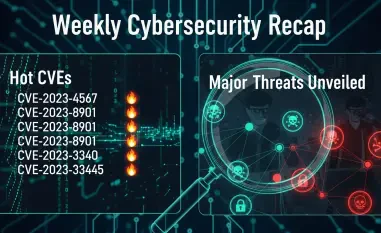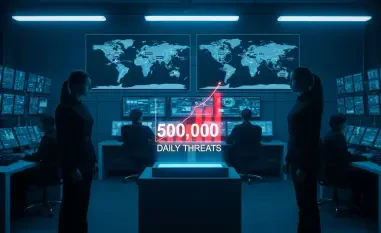Imagine a world where businesses and institutions constantly live under the shadow of ransomware threats, perpetually anxious about the risk of their data being held hostage by cybercriminals. This scenario has become a harsh reality in recent years, with ransomware attacks escalating and causing widespread disruption. However, 2023 has brought a significant turnaround in the landscape of ransomware, primarily due to the concerted efforts of law enforcement agencies disrupting these malicious activities.
The Impact of Law Enforcement Operations
Disruption of Ransomware Groups and Crypto Laundering Services
Law enforcement agencies have mounted an aggressive counter-offensive against ransomware groups and their associated crypto laundering services, leading to a notable decline in ransomware payments in 2023. According to a report by Chainalysis, these payments fell by about 35% from $1.25 billion to $812.55 million. This sharp decline became especially evident in the latter half of the year, after initially suggesting a possible record-breaking year in terms of ransomware revenue. The collaboration between agencies like the FBI, Britain’s National Crime Agency, and various international partners has been pivotal in this effort.
The targeted attacks on ransomware groups have led to significant disruption within their operations, causing confusion and operational setbacks. Major ransomware-as-a-service providers have been particularly affected, resulting in decentralization and chaos within the ransomware ecosystem. This disarray has made it increasingly challenging for these groups to operate efficiently, dampening their lucrative payouts. By undermining the infrastructure and support systems that these providers rely on, law enforcement agencies have introduced a new level of complexity and risk for ransomware operators.
Growing Distrust Among Affiliates and Victims
In conjunction with these strategic disruptions, there has been a growing wave of distrust among both affiliates of ransomware groups and their potential victims. This lack of confidence has emerged from the operational disruptions and scams experienced by prominent ransomware groups such as LockBit and AlphV/BlackCat. As these groups faced increased scrutiny and intervention from law enforcement, their credibility suffered, and affiliates began to question the reliability and safety of partnerships with these entities.
The skepticism has also extended to victims, who have become more cautious about paying ransoms. As the probability of data deletion after payment waned due to distrust in ransomware groups’ promises, victims reconsidered the efficacy of compliance. Consequently, companies and institutions increasingly opted for improved cybersecurity measures and incident response strategies over paying ransoms. This shift in mindset among victims played a crucial role in the notable reduction in ransomware payments seen in 2023. The combined impact of law enforcement actions and changing victim behaviors significantly limited the effectiveness of ransomware schemes.
Ongoing Challenges and Future Considerations
Fragility of the Current Situation
Despite the positive developments in 2023, the Chainalysis report, and experts in the field, caution that the fight against ransomware is far from over. The current improvements remain fragile, as the risk of new ransomware groups emerging to fill the void left by disrupted ones is ever-present. Moreover, cybercriminals continue to seek out and exploit vulnerabilities within existing systems, posing a persistent threat. Law enforcement agencies must remain vigilant and adaptive in their strategies to respond to this evolving landscape.
Critical infrastructure, including hospitals and educational institutions, continues to be targeted by ransomware attacks, underscoring the ongoing risk these threats pose to essential services. The potential for significant disruption and harm in these sectors necessitates continuous advancement in both defensive measures and coordinated law enforcement responses. While the reduction in ransomware payments is an encouraging sign, the underlying threat persists, and the number of attacks remains considerably high.
Strengthening Defense and Preparedness
Companies and other entities have found themselves in a persistent state of fear, uncertain when or if they might fall victim to these malicious schemes. However, 2023 has ushered in a significant shift in the landscape of ransomware. This positive change is largely attributable to the concerted efforts of law enforcement agencies worldwide, who have ramped up their initiatives to disrupt and dismantle these criminal networks. Through increased collaboration, advanced technologies, and proactive measures, these agencies have made notable strides in mitigating the prevalence of ransomware attacks, providing businesses and institutions with a newfound sense of security and optimism for the future.













